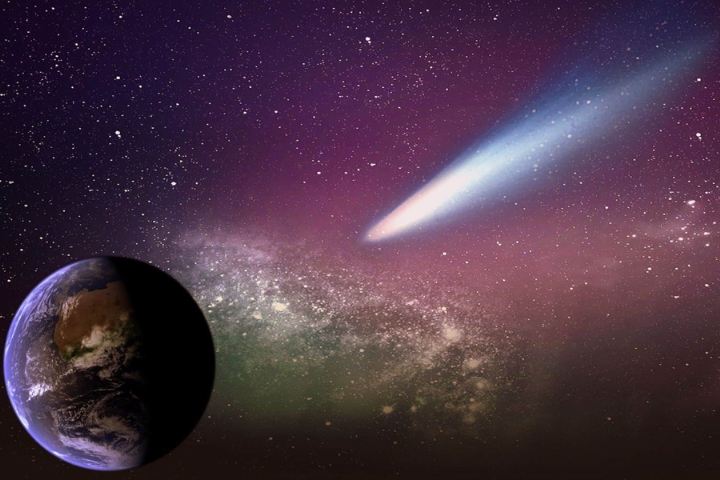NASA astronaut Matthew Dominick recently captured stunning footage of Comet Tsuchinshan-ATLAS from the International Space Station (ISS). This celestial body, travelling towards the Sun, is anticipated to reach its brightest on October 12, providing a spectacular view for observers on Earth.
Comet Characteristics
Comet Tsuchinshan-ATLAS, designated C/2023 A3, was discovered by the Asteroid Terrestrial-impact Last Alert System and the Tsuchinshan Chinese Observatory.
Currently visible as a fuzzy star to the naked eye, its true form is revealed through advanced camera techniques.
Dominick used a 200mm lens to capture the comet’s details, noting its increasing visibility as it approaches the Sun.
Upcoming Visibility and Concerns
As the comet speeds towards the Sun at 180,000 mph, it is set to pass closest to the Sun on September 27 before making its nearest approach to Earth on October 12, about 70.6 million kilometres away.
While some reports suggested the comet might disintegrate due to outgassing, other scientists confirm that it remains intact and will likely shine brighter than Jupiter during its peak visibility.
Notable Comets Approaching the Sun
Comets are intriguing objects made of ice, dust, and rock. Here are some notable ones that have approached the Sun:
- Halley’s Comet (1P/Halley): Known as the most famous comet, Halley’s Comet has a 76-year orbit and has been seen for centuries, with records dating back to 240 BC. It last came close to the Sun in 1986.
- Comet Hale-Bopp (C/1995 O1): Discovered in 1995, Hale-Bopp was one of the brightest comets of the 20th century, visible for 18 months. It passed near the Sun in April 1997, offering spectacular views
- Comet Shoemaker-Levy 9: This comet made headlines in 1994 when it collided with Jupiter, helping scientists understand comet orbits and impacts better.
- Comet NEOWISE (C/2020 F3): Discovered by NASA in 2020, NEOWISE was visible to the naked eye in July, stunning many with its bright tail as it approached the Sun.
- Comet Lovejoy (C/2011 W3): Found by Terry Lovejoy, this comet survived a close encounter with the Sun in December 2011 and became visible, providing a spectacular sight.
These comets, among others, help us learn about the history and dynamics of our solar system.




GIPHY App Key not set. Please check settings